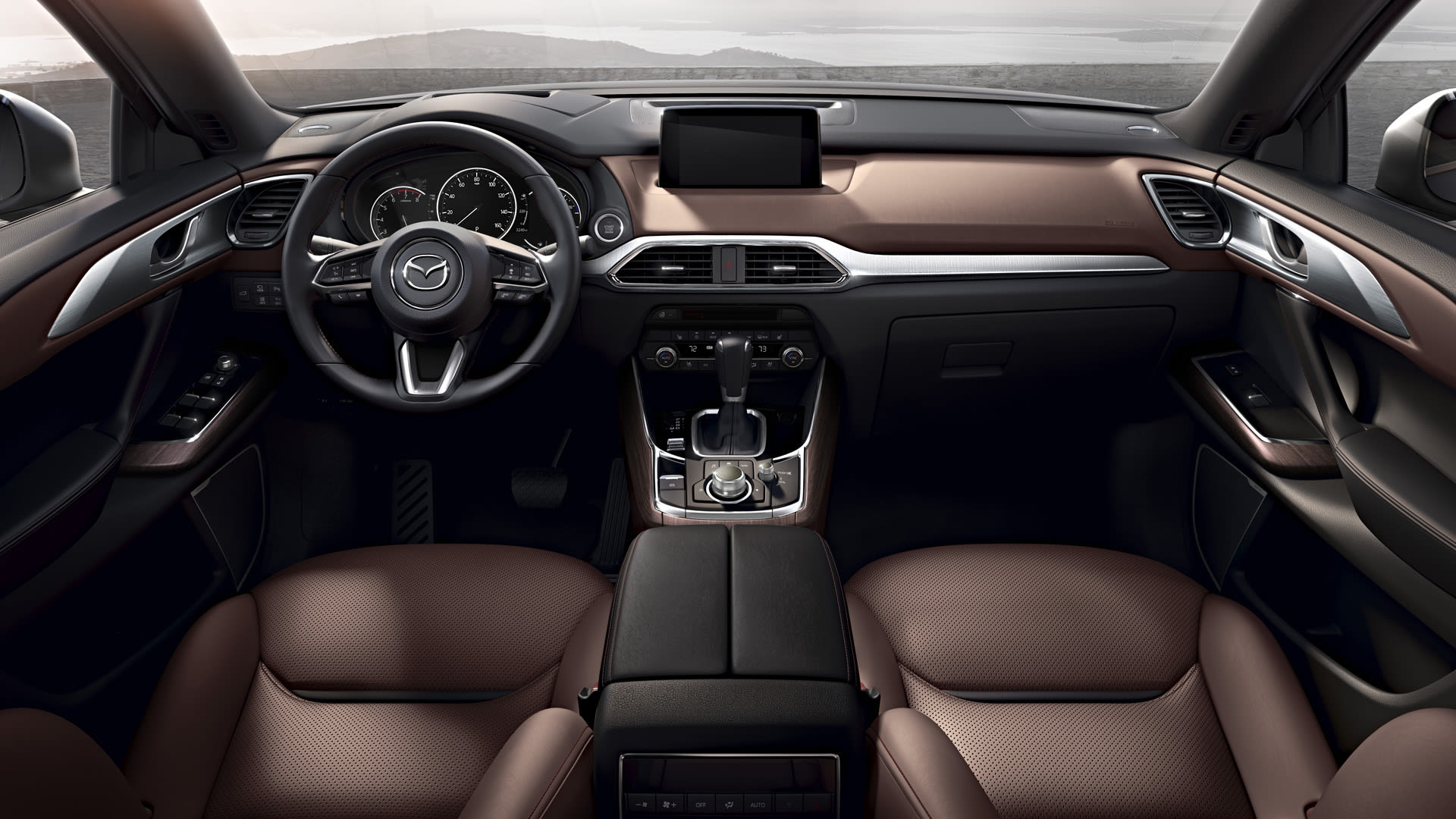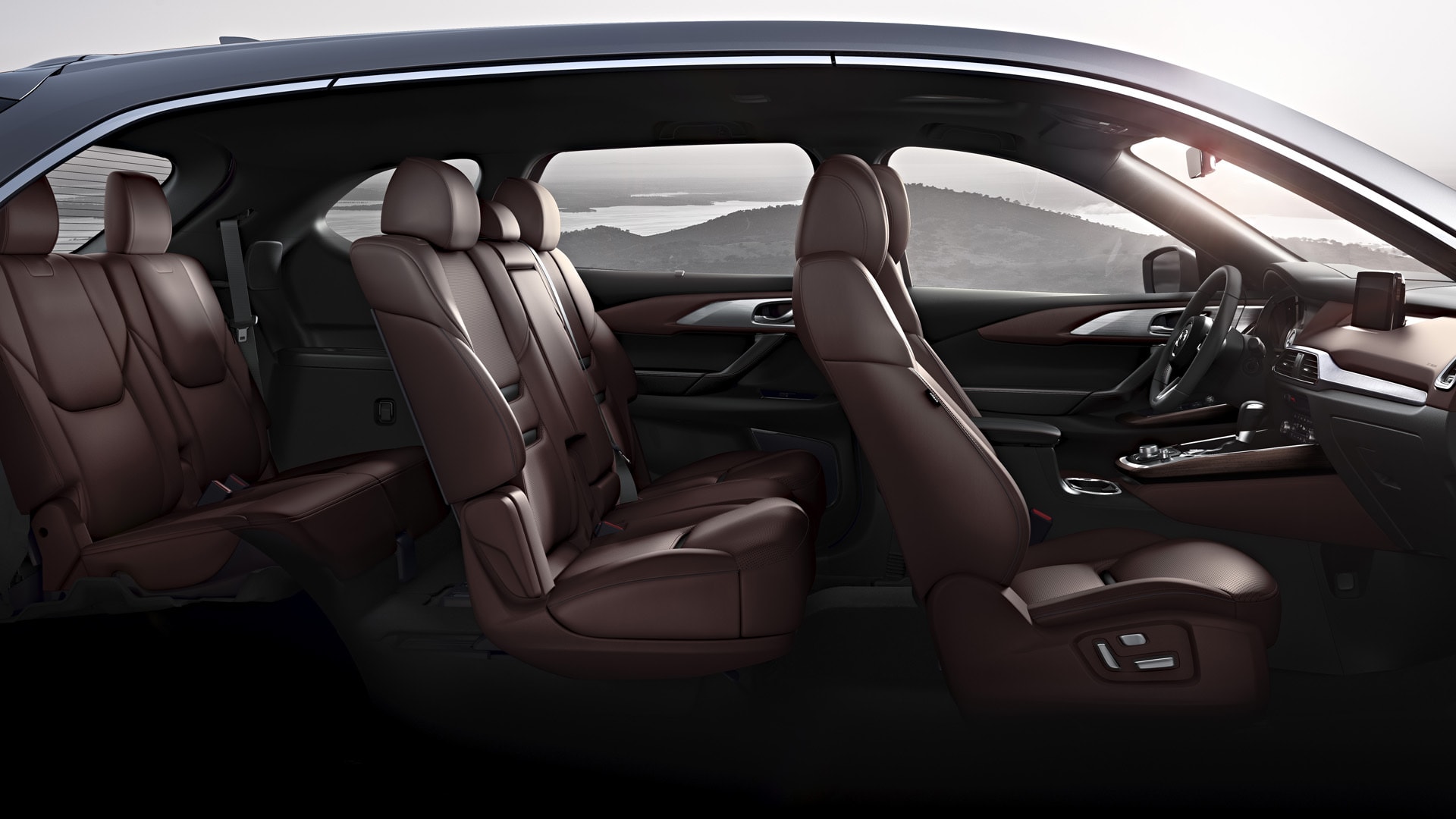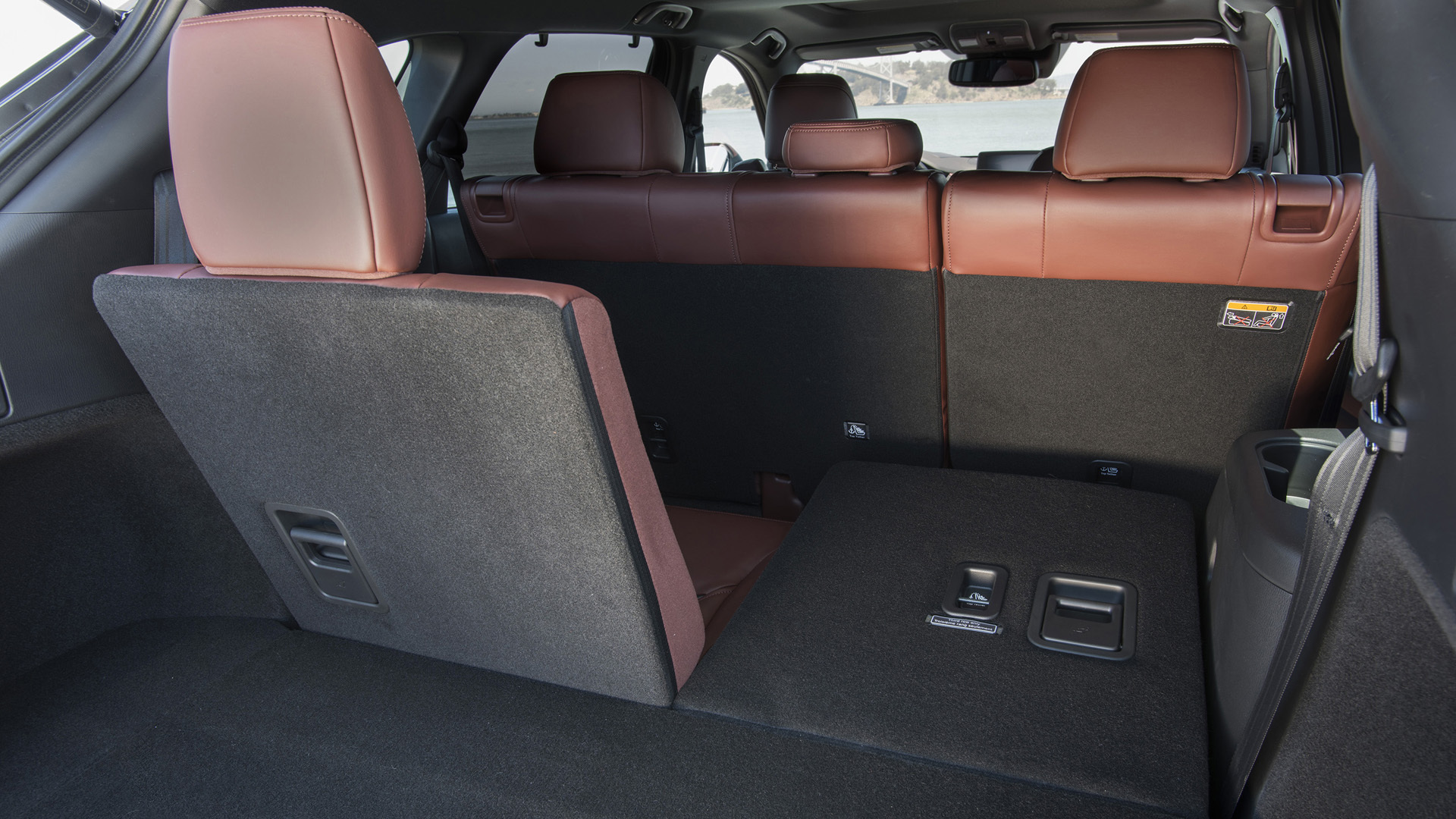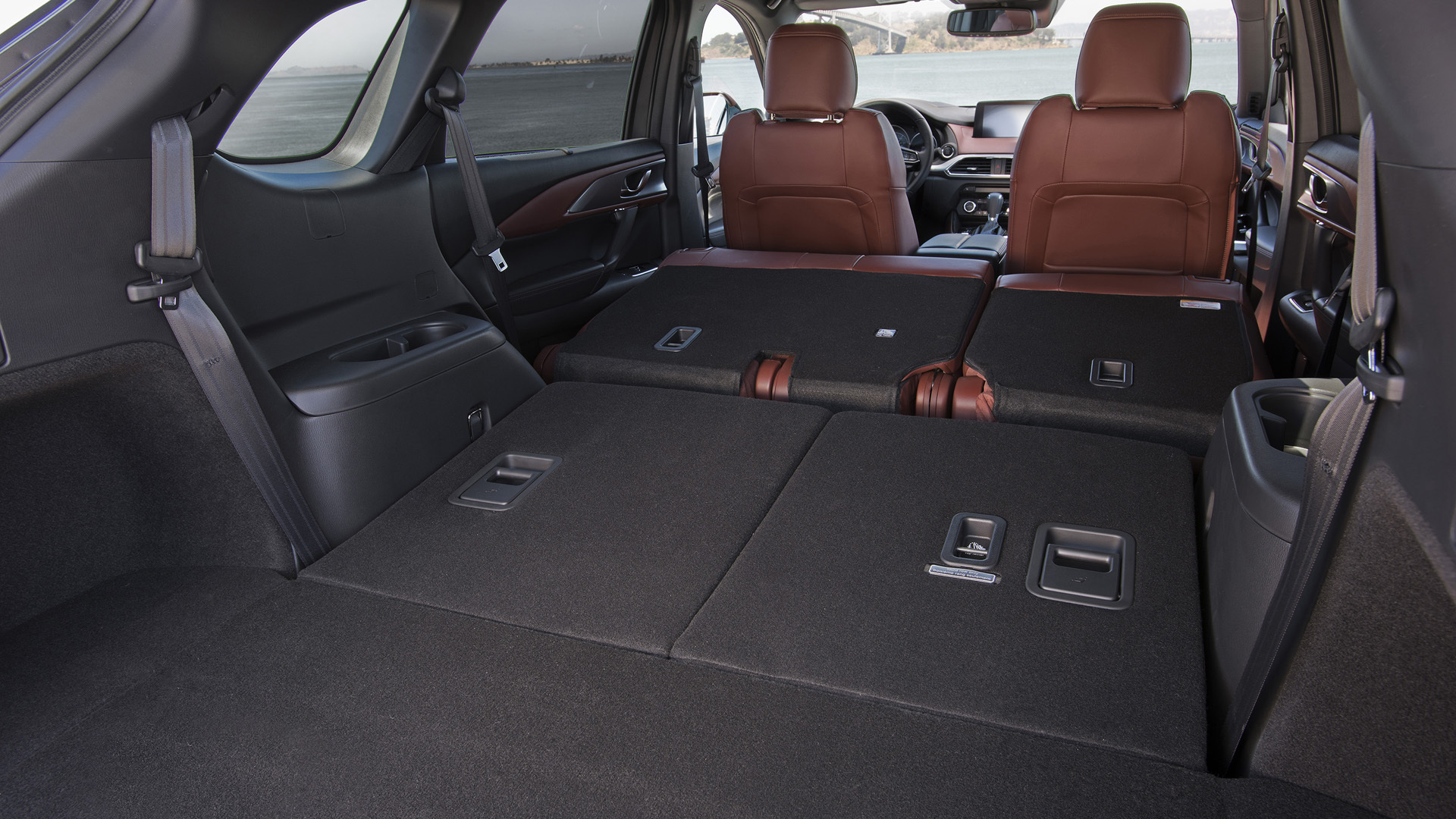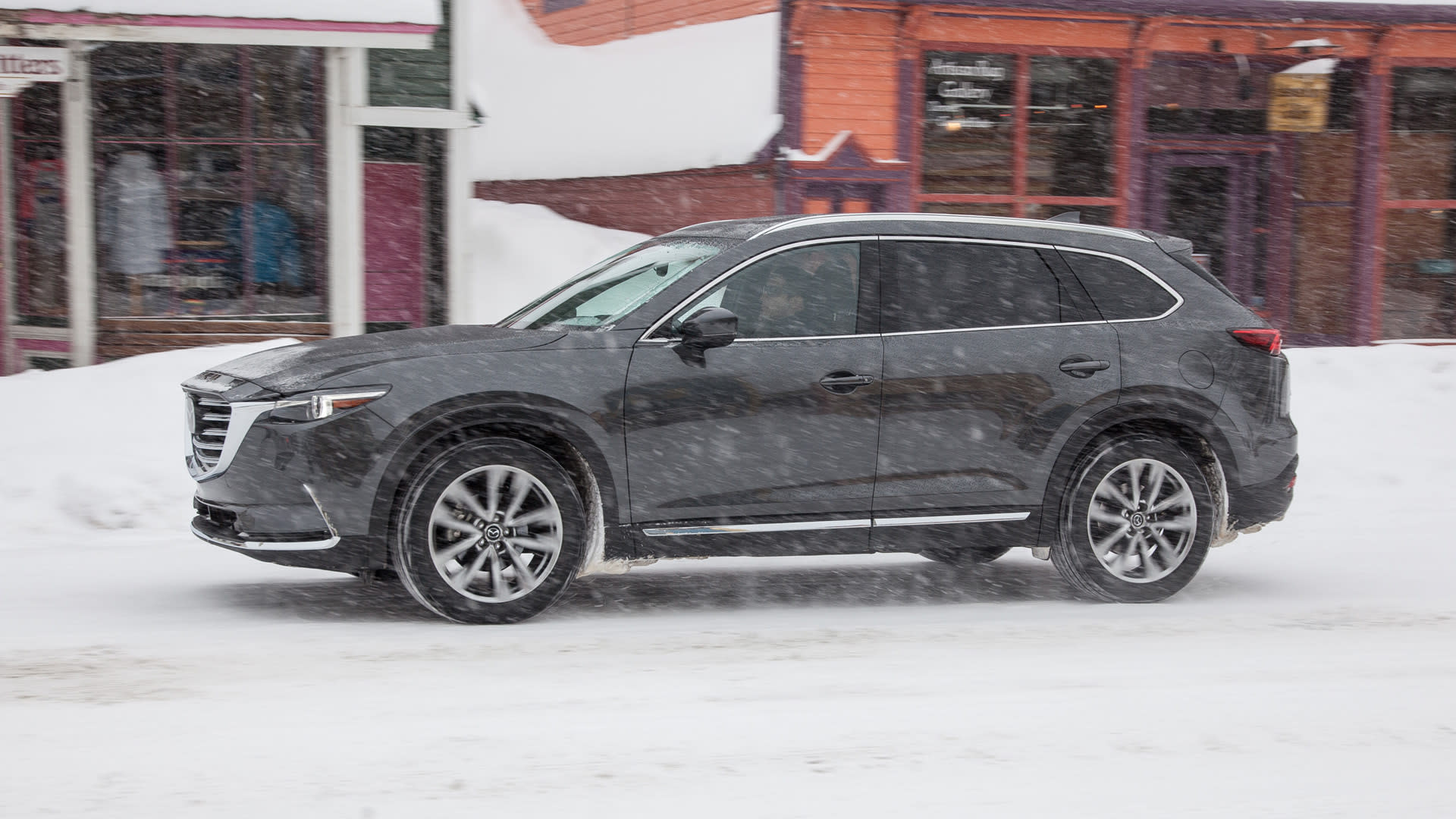Audi Repair Shop Doylestown
Call 267 279 9477 to schedule a appointment
The
crossover is the biggest vehicle in the Japanese automaker’s lineup, and the only one to offer a third row of seating. It has only one powertrain option, but offers a wide variety of other content across various trim levels. Many folks are drawn to
for their elegant design, affordability and driving dynamics that are sharper than most, and the
has all of that to a certain degree even if it’s the biggest, most family-oriented one. Still, the CX-9 may be big for a Mazda, but it’s one of the smallest in its segment in terms of third-row space and cargo capacity, so it may not be for every family.
What’s new with the Mazda CX-9 for 2019?
Though largely unchanged from when this generation debuted for the 2016 model year, the
Mazda CX-9 gets a few small changes for 2019
, the biggest of which is the addition of Apple CarPlay and Android Auto compatibility, which is optional on its lowest Sport trim and standard on the Touring, Grand Touring, and Signature. The transmission has been retuned for a smoother, quieter driving experience. Thicker floor mats and headliner further help to make the car quieter.
Each trim gets a little something new, too. Sport now offers an optional Sport Package, costing $1,290, with heated front seats, a power driver’s seat, heated mirrors, lane-keep assist, adaptive cruise control and automatic emergency braking. Moving up to the Touring trim, the only other change is a frameless rear-view mirror. The Grand Touring trim gets a new 7-inch info screen in the instrument panel, along with new power-folding side mirrors and a 360-degree camera system. The top-level Signature trim gets new badges, rosewood interior trim, and accent lighting in the grille and around the shifter.
Along with the new features, the CX-9 increases in price. The Sport trim costs a mere $150 more, the Touring and Grand Touring trims go up by $370, While the Signature jumps $1,050 compared to the 2018 model.
What are the CX-9’s interior and in-car technology like?
The interior varies by trim level, but with Mazda making moves to grab customers from some of the luxury brands on its “path to premium,” the higher grades do look and feel like a high-quality, comfortable place to spend time. It’s a spacious interior with room enough for a third row. There are some rally nice materials in use, depending on the trim level, including Nappa leather and something called Santos Rosewood. It’s all laid out in a straightforward, traditional way though crafted with care and attention to detail.
The infotainment system is fairly easy to use, though not quite as intuitive as the touchscreens from
and Kia. You can interact with it through the touchscreen but only when parked, meaning the system is largely controlled by the buttons and rotary control on the center tunnel. It responds well, without lag or bugginess like Toyota’s systems. If you want a more familiar interface, the CX-9 now offers Apple CarPlay and Android Auto.
How big is the CX-9?
It’s a full-size
with seating for seven passengers. At 199.4 inches long, 77.5 inches wide and 69.0 inches tall, with a 115.3-inch wheelbase, the
Is larger than most of the other cars in the segment, save the
. It’s only slightly longer than the new
and
.
However, that exterior space doesn’t really translate into a similar advantage inside where it matters most. For starters, most of its competitors can be configured for seven or eight passengers. The CX-9, like the
, is limited to 7. Its third row is also smaller than the competition, with less legroom, notably less headroom and a generally more claustrophobic space.
It’s a similar situation in terms of cargo space. Its 14 cubic feet of cargo space behind the third row and maximum 71.2 cubic is less than most of the competition, including
(21.0/87.0 cubic feet), Explorer (18.2/87.8),
(16.5/83.8),
(17.8/86.5) and
(23.0/98.2).
What’s the CX-9’s performance and fuel economy?
The CX-9 employs a turbocharged 2.5-liter four-cylinder engine providing 250 horsepower and 310 pound-feet of torque. That’s less horsepower but more torque than much of the competition. It’s rated to tow 3,500 pounds, while the Ascent, Pilot,
, Explorer and Traverse each tow as much as 5,000 pounds.
The front-wheel-drive version gets 22 mpg city, 28 highway and 24 combined, while the all-wheel-drive version gets 20 mpg city, 26 highway, 23 combined. Most of the competition gets similar
, with combined ratings ranging from 20 to 24 combined mpg, depending on how they’re configured, but the Mazda sits on the more economical side of that range.
What’s the CX-9 like to drive?
Despite having less horsepower than the competition, the CX-9 doesn’t feel sluggish around town thanks to the impressive 310 pound-feet of torque peaking at a low 2,000 rpm. That pep does begin to fade at the higher end of the rev range, especially when loaded up with people and cargo.
It’s clear that Mazda kept the driver in mind when creating this CX-9, as it’s actually a pleasant ute to drive — even sort of fun. In a segment that is far more utilitarian that entertaining, this is the closest thing to an enthusiast pick available. It handles well, and responds to inputs in a satisfying way. Its ride isn’t detached or anything approaching squishy, but it’s still fairly compliant, and therefore comfortable even on lousy roads. That said, it
is
a big vehicle, which means it’s kind of tricky to navigate tight parking lots. Still, that’ll be the case with any large three-row crossover. And if you’re reluctant to make that family-forced plunge from a smaller, fun-to-drive car, the CX-9 should make the impact a little less painful.
What more can I read about the CX-9?
If you’re cross-shopping the CX-9 or the Subaru Ascent, this is a good read to highlight the two cars’ strengths and weaknesses. It’s a tough choice, but we’re here to help you make an informed decision.
Some high-level comparison among some of the segment’s most popular vehicles, complete with charts comparing performance, size and fuel economy.
Mazda made a few changes to the CX-9 for the 2019 model year. Here, we describe the new features for various trim levels, and break down pricing.
This is our first drive of this generation of the CX-9, complete with full driving impressions and analysis for potential buyers. The gist: It’s not for everyone, but for some people, it’s the perfect, almost plucky three-row crossover.
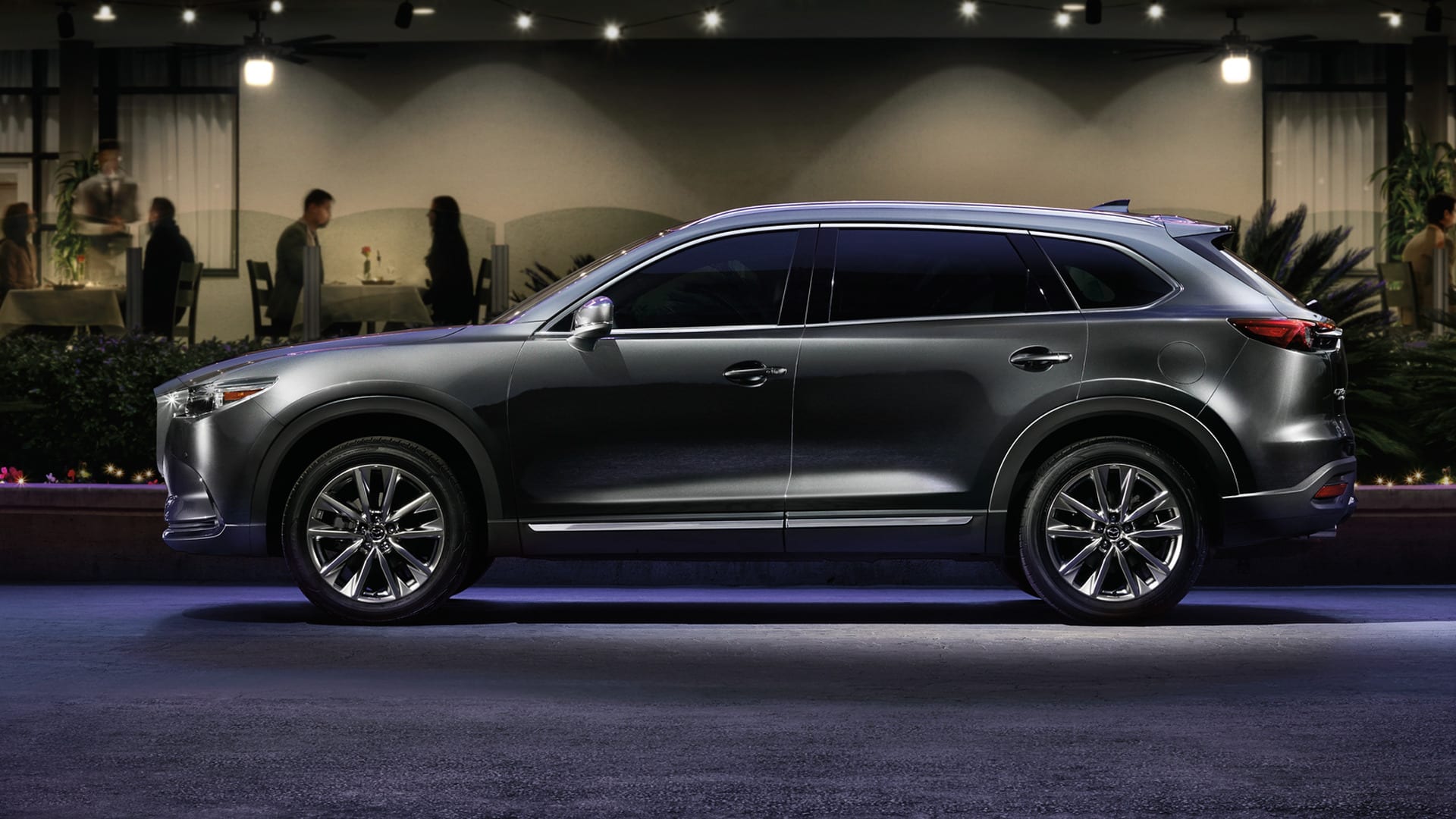
What features are available and what’s the CX-9’s price?
Pricing for the 2019 Mazda CX-9 starts with the Sport trim level with front-wheel drive at $33,325, including the $1,045 destination charge. The all-wheel-drive version starts at $35,125.
Standard equipment on the Sport includes 18-inch aluminum alloy wheels, LED headlights and taillights, rear privacy glass, three rows of seating, three-zone climate control, proximity entry and push-button start, leather-wrapped steering wheel and shift knob, Mazda Connect infotainment with 7-inch touchscreen and a variety of internet-streaming radio apps.
To see what extra features come on the Touring, Grand Touring and Signature trim levels, check out this
breakdown of features, specs and local pricing here on Autoblog
. You can find their pricing below.
- Sport FWD: $33,325
- Sport AWD: $35,125
- Touring FWD: $36,375
- Touring AWD: $38,175
- Grand Touring FWD: $41,885
- Grand Touring AWD: $43,505
- Signature AWD: $46,410
What’s CX-9’s safety equipment and crash ratings?
Besides the expected array of
and stability aids, every Mazda CX-9 comes standard with a rearview camera, blind-spot monitoring, rear cross-traffic alert, and low-speed emergency braking assist. Touring trim and higher includes lane departure warning, lane-keeping assist, automatic high beam control, and automatic emergency brake assist with pedestrian detection.
The National Highway Traffic Safety Administration gives the Mazda CX-9 a five-star overall safety rating, with four-star frontal and rollover ratings, and a five-star side crash rating. The Insurance Institute for Highway Safety gives it the best-possible marks in
and for its front crash prevention system, while headlights and child seat anchors ease of use earn “Acceptable” ratings.
from Autoblog http://bit.ly/2IVpZqw

